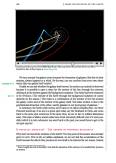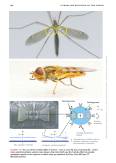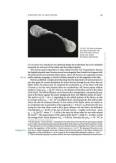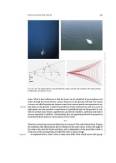The fascination of everyday motion – with almost no mathematics.




How high can animals jump? What are the fastest thrown balls? How fast can aeroplanes and butterflies fly? What does the sea level tell about the sun? What are temperature and heat? What is self-organization?
Covers energy, momentum, mass, force, fluids, gravitation and motion with almost no formulae.
This free colour pdf on introductory physics guarantees to be entertaining, surprising and challenging on every page. The text presents the best stories, images, movies and puzzles in mechanics, gravity and thermodynamics - with extremely little mathematics - always starting from observations of everyday life. The text also explains conservation laws and the reversibility of motion, explores mirror symmetry, and presents the principle of cosmic laziness: the principle of least action.
Watch some captivating videos about motion in nature by clicking here.
This popular book is downloaded over 40 000 times per year. If you are between the age of 16 and 106 and want to understand nature, you will enjoy it!
The book promises Wonder and thrill on every page: it tells the various puzzles about the colour of the bear and about the picture on the wall, explains about the many types of water waves, introduces the art of laying rope, tells about the dangers of aeroplane toilets, explores the jumping height of different animals, presents the surprising motion of moguls on skiing slopes, explains why ultrasound imaging is not safe for a foetus, gives the ideal shape of skateboard half-pipes and estimates the total length of all capillaries in the human body.
The text also explains how it is possible to plunge a bare hand into molten lead, includes a film of an oscillating quartz inside a watch, includes the "handcuff puzzle" and the "horse pulling a rubber with a snail on it" puzzle, explains how jet pilots frighten civilians with sonic superbooms produced by fighter planes, presents the most beautiful and precise sundial available today, shows leap-frogging vortex rings, tells the story of the Galilean satellites of Jupiter, mentions the world records for running backwards and the attempts to break the speed sailing record, and tells in detail how to learn from books with as little effort as possible.
You will also read about all the things that can move in nature, about the conservation of energy and momentum, about entropy and temperature, and about the principles and laws of thermodynamics. Exploring everyday motion is a fascinating adventure. Enjoy it!
| FALL, FLOW AND HEAT | ||
| 1 | Why should we care about motion? | 15 |
| 2 | From motion measurement to continuity | 33 |
| 3 | How to describe motion – kinematics | 72 |
| 4 | From objects and images to conservation | 90 |
| 5 | From the rotation of the Earth to the relativity of motion | 123 |
| 6 | Motion due to gravitation | 151 |
| 7 | Classical mechanics and the predictability of motion | 195 |
| 8 | Measuring change with action | 213 |
| 9 | Motion and symmetry | 229 |
| 10 | Simple motions of extended bodies – oscillations and waves | 248 |
| 11 | Do extended bodies exist? – Limits of continuity | 283 |
| 12 | Fluids and their motion | 301 |
| 13 | From heat to time-invariance | 319 |
| 14 | Self-organization and chaos - the simplicity of complexity | 348 |
| 15 | From the limitations of physics to the limits of motion | 366 |
| Appendix A | Notation and conventions | 372 |
| Appendix B | Units, measurements and constants | 383 |
| Appendix C | Sources of information of motion | 398 |
If you want to help improving this free introduction to physics,
mechanics and motion, please send your improvements and suggestions to christoph@motionmountain.net. And
enjoy the reading!